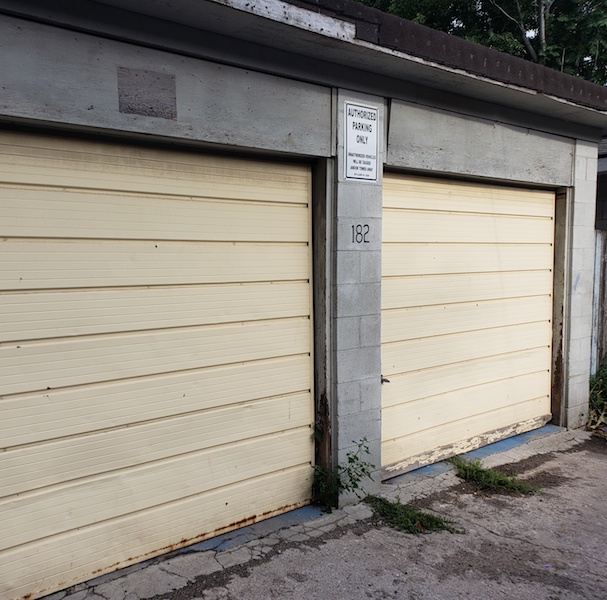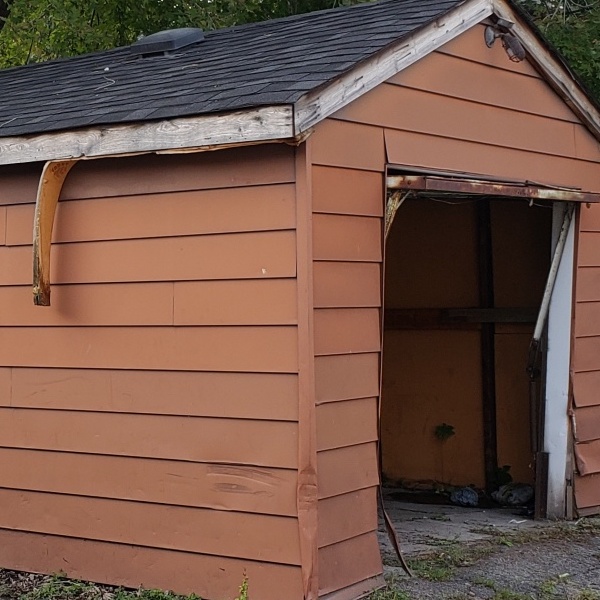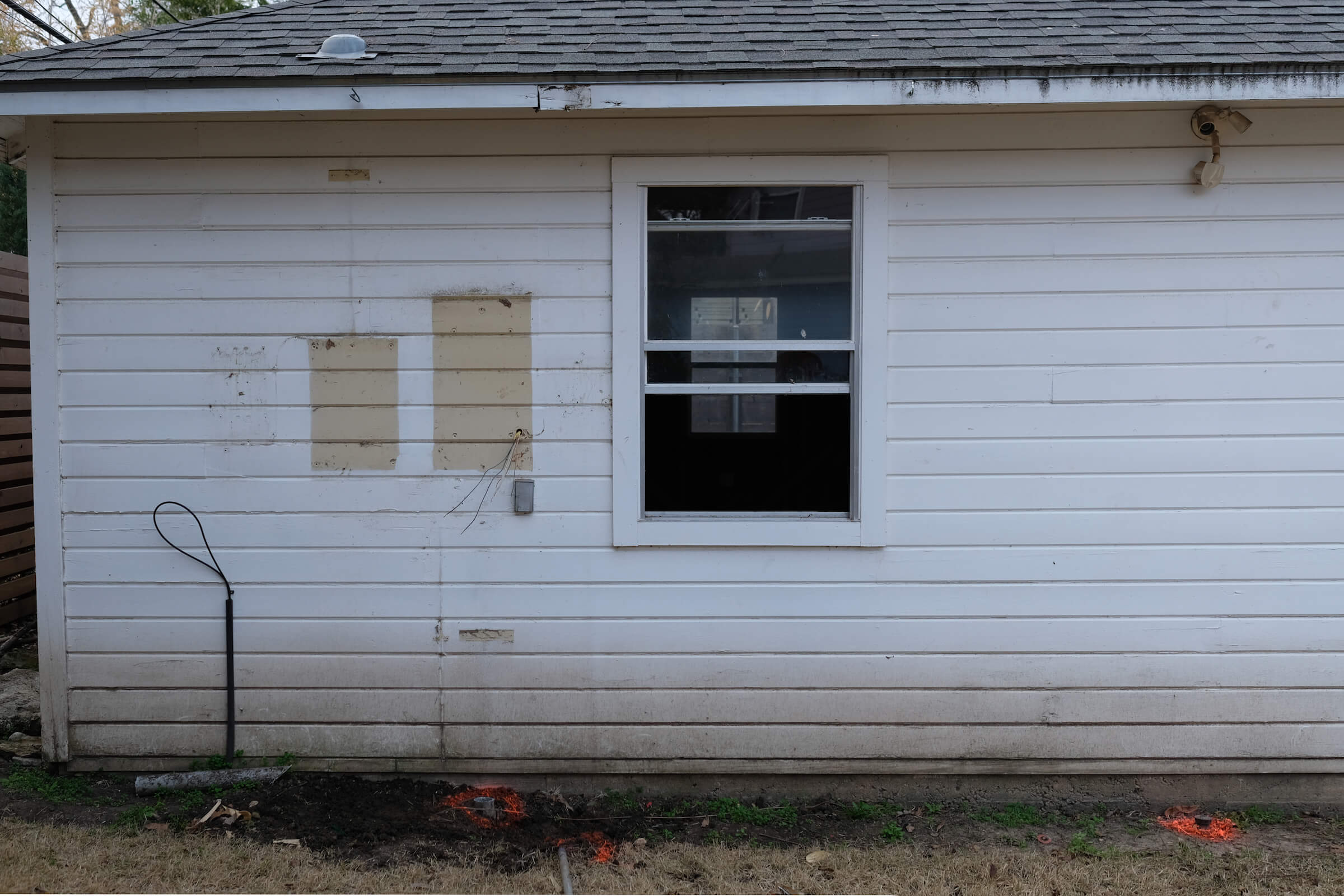Given how popular asbestos was during the mid-1900s, it’s no surprise that this harmful material is lurking in many garages today. Asbestos made for an effective and affordable solution to many construction problems. It’s for this very reason that it was used heavily in insulation, adhesives, sealants, coatings, and cement.
Between 1940-1970, asbestos helped many homeowners cheaply construct garages on their garages. Even contractors utilized this affordable solution to build these units. Unfortunately, this means that many garages are filled to the brim with harmful asbestos that can be potentially dangerous to homeowners.
Why is Asbestos Bad?
Health experts have linked asbestos to some pretty nasty lung issues. Asbestos itself isn’t really harmful, but over time the material can become damaged. If disturbed, it can break into microscopic fibers that get released into the air. From there, it’s a nightmare for anyone that inhales them. You can’t feel, see, or taste asbestos. Symptoms might not present themselves for around 10-40 years either.
Asbestos causes two major complications. These diseases can be extremely harmful and potentially deadly.
Asbestosis: A disease where microscopic asbestos fibers scar the lung tissue causing significant damage.
Mesothelioma: A type of lung cancer caused by asbestos fibers where the average life expectancy is 12 months after diagnosis.
Where Can Asbestos be Found in Your Garage?

So, you’re probably wondering where you might find asbestos in your garage. Well, sadly you can find it in a wide variety of locations and applications.
- Asbestos cement corrugated roof sheets or tiles
- Asbestos cement sides/cladding
- Asbestos Cement Facias
- Asbestos insulating board
Many old garages built between 1930-1970 used entire asbestos cement panels for their garages. These and other asbestos-containing products aren’t produced anymore. Products like:
- Asbestos vinyl tiles
- Asbestos roofing felt
- Asbestos sealants
- Asbestos adhesives
- Asbestos coatings
Two of the most popular areas you may find asbestos in your garage are the roof and walls. Why? Well, mainly because asbestos was perfectly affordable material that people could use to withstand heat, decay, erosion, electrical issues, and even some weathering.
Asbestos Cement Roofing
Many of these garage roofs have asbestos-containing cement in them. If it’s in good condition, it’s not a problem. Managing asbestos is usually only recommended if the area containing asbestos has damage or weathering that could potentially lead to asbestos fibers becoming airborne.
It’s for this very reason that asbestos removal isn’t an option unless it’s absolutely necessary. If renovations or demolition are on the table, a professional should be brought in to deal with the asbestos safely.
Over time, your garage roof will go through wear and tear, weathering, or possibly damage. The more damage that occurs, the higher the chances that asbestos fibers can make their way into people’s lungs.
Asbestos Siding

Similarly to roofing, siding used asbestos cement products that contained dangerous fibers. Many of these products were used to add additional support, stability, and fireproofing. Just like with the roofing, if the siding isn’t damaged, it presents no risk.
If you’re wondering if your garage may have asbestos siding, here’s what you can look for. Siding that contained asbestos has a distinct look.
- Scalloped edges
- Ridges
- Grooves
Now, this isn’t to say that all ridged siding contains asbestos. The only way you can be 100% certain is to have a sample collected and tested by a professional. While homes, buildings, and garages that were built between 1930-1970 have a higher chance of containing asbestos materials, you can’t be sure until you test them.
Managing Asbestos
If your garage does have asbestos-containing materials, you’ll need to be aware of where it is and how to manage it effectively. As we’ve mentioned, if the area containing asbestos is in good condition, leave it alone. The worst thing you can do is disturb the area and release asbestos fibers unknowingly. So, take note of any areas you think or know may have asbestos materials, and leave them alone.
If you notice or know of areas that have damaged asbestos-containing materials, stay away from them. The United States Consumer Product Safety Commission implores you to limit exposure to these areas and don’t handle the materials yourself. A professional should always be brought in to deal with problem areas, as they have both the training and expertise to effectively discard the harmful substances. If your garage was built during the risk period (1930-1970), and you’re not sure about a damaged area, have it sampled.
If you have a professional brought in to manage your asbestos issue, here’s what they’ll do.
- Seal up your asbestos by binding fibers together
- Cover up your asbestos materials so the fibers cannot escape
- Remove asbestos material entirely
Get a Professional Touch
Dealing with asbestos isn’t something you should do on your own. It takes training and certifications to manage effectively. Even inspections require specialized education. If you want to do your part, here are some steps you can take.
- Hire a licensed inspector
- Hire a corrective-action contractor
- Get a written work plan with that the contractor must follow
- Make sure the work area is sealed
- Have contractors clean up effectively
Do You Work With Asbestos-Containing Materials?
The people who have the highest risk of asbestos exposure are those that work in areas where asbestos materials are disturbed. Renovators, construction workers, or demolition teams are at especially high risk. If you or your employees work in areas where asbestos-containing materials are present, there are some steps you need to take. These steps are required by the Environmental Protection Agency (EPA).
Below is a list of all training programs that certain workers must complete to engage in an asbestos-related activity.
Asbestos Operations and Maintenance
Asbestos Contractor/Supervisor
Custodial and Maintenance Workers (Awareness Course)
Your worker’s safety is a must. However, that’s not the only reason why these training courses are needed. Effective asbestos management also keeps homeowners, workers, and building occupants safe.
Do you have questions about asbestos training courses or certifications? Contact us today; we’d love to help.


